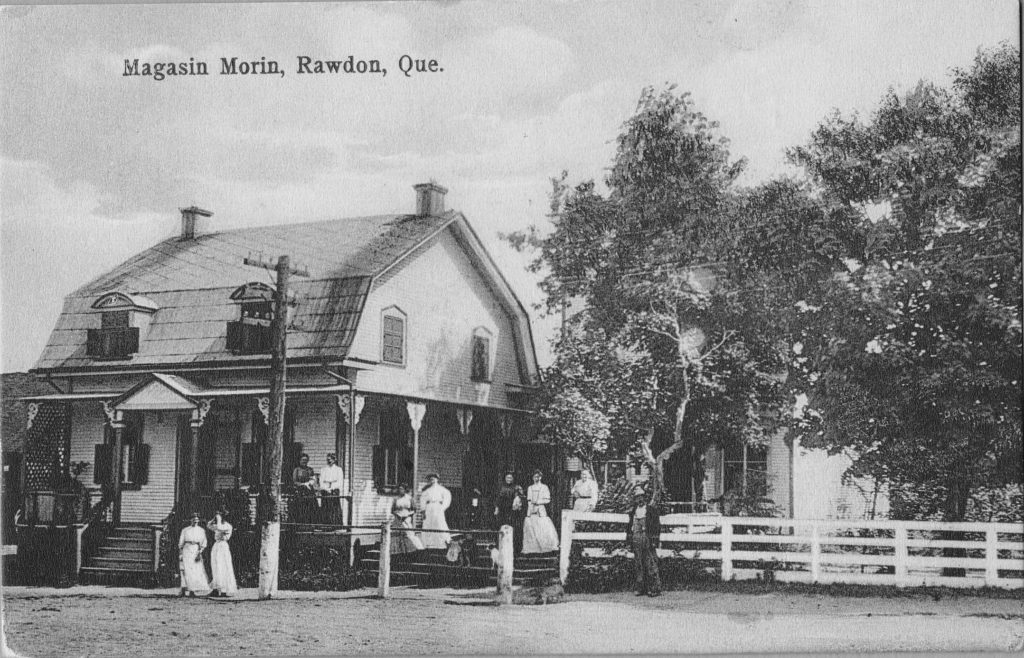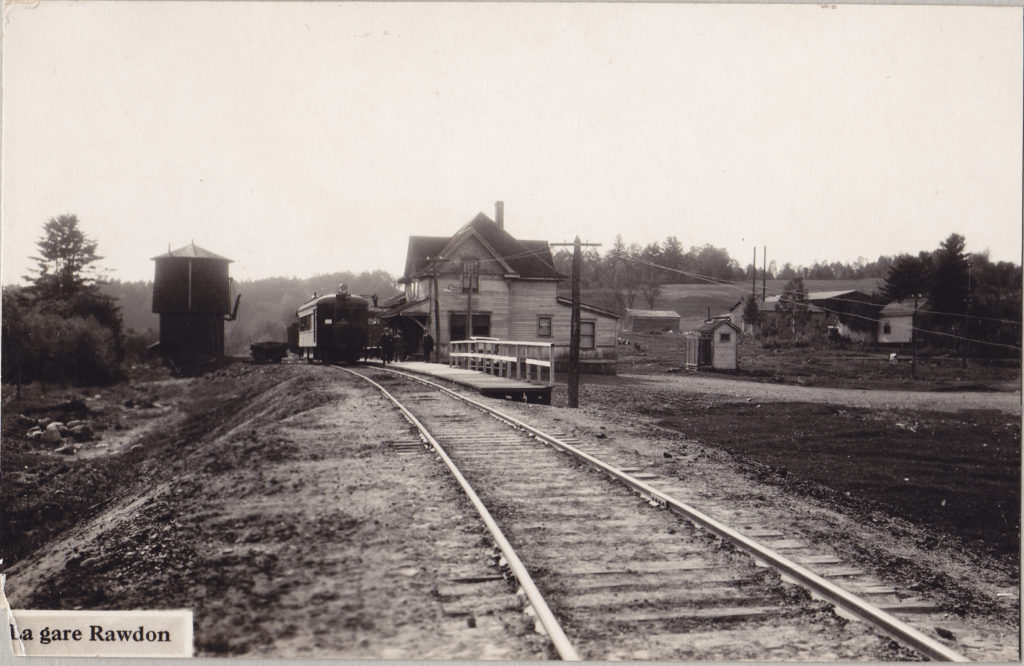The year 1823 marked a significant stage in the history of Rawdon. It was in fact the year that the government began to issue the first letters patent making the location ticket holders, who had fulfilled their obligations, the owners of their lands. On August 14, 1823, Reverend James Edmund Burton thus became the very first resident of Rawdon to get his letters patent. Between 1825 and 1835, 118 settlers also legally became the owners of their lands. Rawdon then experienced a period of considerable progress.
In a book entitled General Report of an Official Tour Through the New Settlements of the Province of Lower Canada, published in 1825, the Surveyor General of Lower Canada, Joseph Bouchette, indicated that, at that time, the population of Rawdon was 75% Irish. He also noted that 796 acres of land had been cleared, 546 of which were being cultivated, and that the settlers owned a total of 44 houses, 25 barns, 19 horses, 85 cows, 27 pigs and 7 sheep!
From 1825 to 1832, Rawdon continued to develop and progress. New lands were cleared, new roads and bridges were built, and the population continued to grow. In 1832, surveyor Bouchette published a new document in which he once again referred to Rawdon. This text provides a better measure of the progression that the village experienced between the years 1825 and 1832. Here is what he wrote:
“The population is chiefly composed of emigrants from Ireland, and the settlements are in a state of tolerable advancement. The inhabitants derive much advantage from Mr. Dugas's excellent corn and saw-mills in lot 24 in the first range, whence the road winds into and traverses the interior of the township up to the 7rd range. From the Manchester mills one mile s. (south) of Dugas's mills, the road…traversing…part of Rawdon…of which one-third is a footpath."
“Few townships are so well watered as this, which has no less than 4 rivers besides smaller streams. The rivers are the Ouareau, the Rouge, the Blanche and a branch of the St. Esprit... Every river is crossed by one or more bridges… There are 5 bridges in all, which were built by the settlers.”
“The Grand Voyer (the title held by the inspector general of roads around 1850) has laid out several roads from the front to the rear of the township, all of which are at present passable for carts... A road is opened from this T. (township) to Berthier through the Grand Rousseau (of St. Jacques – ‘the great range’).”
“Considerable quantities of maple sugar are produced in this T. and flax has been cultivated with some success. The neat cattle are, generally, of the small Canadian breed. In this T. is one public school... The best mode of effecting connected settlements in this T. would be the establishment of settlers on the borders of the river Lac Ouareau, which presents many advantages, viz. the excellent quality of the soil." Rawdon had an industry that included 3 corn-mills, 4 saw-mills and 8 potasheries. The population was 850.
Joseph Bouchette, A Topographical Dictionary of the Province of Lower Canada, London, 1832
Rawdon underwent renewed growth in 1837 when Bishop Lartigue, bishop of Telmesse and coadjutor of the bishop of Quebec for the ecclesiastical division of Montréal, made Rawdon a catholic parish. From then on, many French-Canadian settlers left the overpopulated parishes of the south to come and establish themselves in Rawdon.
The 1844 census established the population of Rawdon at 2,607 persons. It was composed of 926 French Canadians, 883 English Canadians, 695 Irish, 64 English, 23 Scots, 2 Americans and 14 “others.” For the first time, the Irish no longer made up the majority of the population. But with the French Canadians, they formed a very large Catholic parish.
Rawdon’s growth was not limited to its population. Industry and commerce were also progressing. There were then 465 houses, 13 corn-mills, 9 saw-mills, 21 potasheries, 1 blacksmith’s shop, 1 tannery and 4 inns.
If the presence of a few French-Canadian families in Rawdon can be traced back to around the beginning of the 1820s, it wasn’t until 1850 that a true francophone community appeared. Many Acadian families then left the St. Jacques valley to settle on the Rawdon plateau. Of catholic faith, like the Irish, the French-Canadian community actively participated in the development of the settlement, notably thanks to Father Landry who succeeded, after a hard-won fight, in getting the railroad to pass through Rawdon (1910). This railroad significantly contributed to the tourism and industrial development of Rawdon.
In the years that followed, Rawdon continued to grow and created various institutions such as municipal and school councils, and churches of different faiths appeared. Then, from 1920-1930, Rawdon experienced a new wave of immigration. Russians and Poles were the first to make Rawdon their new favoured land and establish significant communities. They were soon followed by Hungarians, Ukrainians, Germans, Czechoslovakians and others who were ravaged in the two great wars (1914-18 and 1939-45).
That was how the multicultural face of Rawdon was developed over the years.


